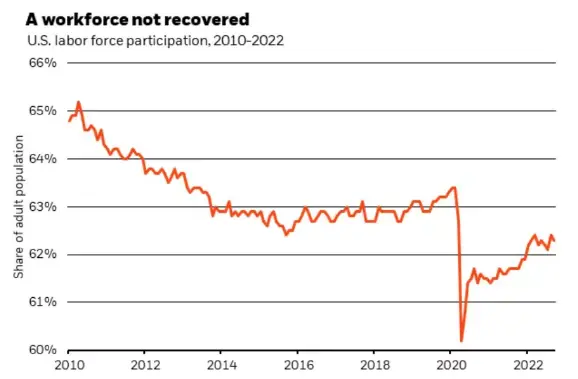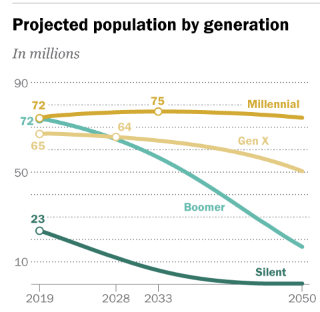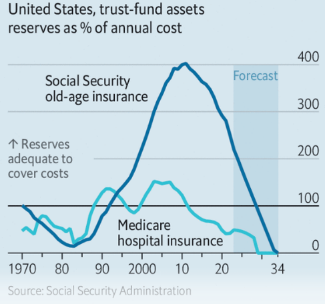Demographics and the 2020s
There seems to be a worker shortage in the US right now. The job (and stock) market is hot despite recent dire recession calls. Why?
What about Covid’s effect on the retirement of the Baby Boomers? Covid forced financial stimulus and all the supply bottlenecks, which set us on course for recession. Can demographics help explain the longer-term economic challenges in the 2020s?
Baby Boomer Retirement

Above, you can see the labor force participation rate. It was 63% and trending stable or up before 2020. While it is only a percent lower than previous, that is 1 million workers who do not show up on the more traditional graphs demonstrating the employment rate – those who aren’t participating in seeking a job (because, say, they retired due to Covid) don’t show up.
Why are we not in a recession 2 years after the yield curve inverted? Well, blah blah blah sounds accurate, but it could also be due to the housing market and the labor force participation rate.
First, a lot of people quiet quit during the pandemic. I did, and a million other people working before the pandemic have not returned to work. This keeps the job numbers looking good, and we keep adding jobs. My prediction is when the job number softens, we will be talking about a hard landing again.
Next, the housing market has been strong because of low inventory. If you have a sub-3 % mortgage, you might not put your home on the market because you don’t want to get a new mortgage at 6%. But this will also keep people from accessing the capital in the walls of their houses via HELOCs or a cash-out Refi. Interest rates might prevent people from using their houses as a piggy bank, even though many have a good amount of nickels and dimes socked away in the walls of their houses.
What about some other demographic issues for the 2020s?
Demography and the 2020’s
Remember, “Demography is destiny.”
Birth rates have dropped in half since 1950. In most countries, we are not below the 2.2 children per woman replacement rate. The world’s population will decrease by the end of the century.
This started in the US long ago, and we have seen the baby boomers’ numbers slide through the snake like a bowling ball. They are headed to retirement when they are on the books for social security and Medicare but with fewer workers to pay the tab.

Above, you can see that in 2019, the millennial generation became the largest in the US. We will lose most boomers over the next 30 years, but we must find a way to pay for their entitlement programs.
Social Security

Above, you can see the trust funds for Social Security and Medicare. Medicare is expected to run out in the next few years, and Social Security will run out in 10 years.
By run out, I mean the trust funds “set aside” (but not really) to fund these liabilities will be depleted, and we will have to make I’s equal 0’s. What we take in taxes will have to support the whole of the funding. This is the third rail of politics and will become larger until we choose to deal with it.
What percent of GDP will Medicare be when we decide to do something about it?
Demographics and the 2020’s
Just like peak oil, which was solved by fracking, and global warming (which will be solved by some technology or otherwise, we better get working on larger rockets that will get us to other planets in the next few centuries), the problems of the US economy will be solved by (hand wave to future technology). I have faith that we will find some solution (remember, we always do the right thing after we have tried everything else).
Meanwhile, demographics are keeping our economy chugging along. The pendulum has swung so that most think we will have a soft landing—no recession. My macro prediction is that this will change when employment numbers soften. There is already a recession in Europe, Japan, and China. Will we be next?